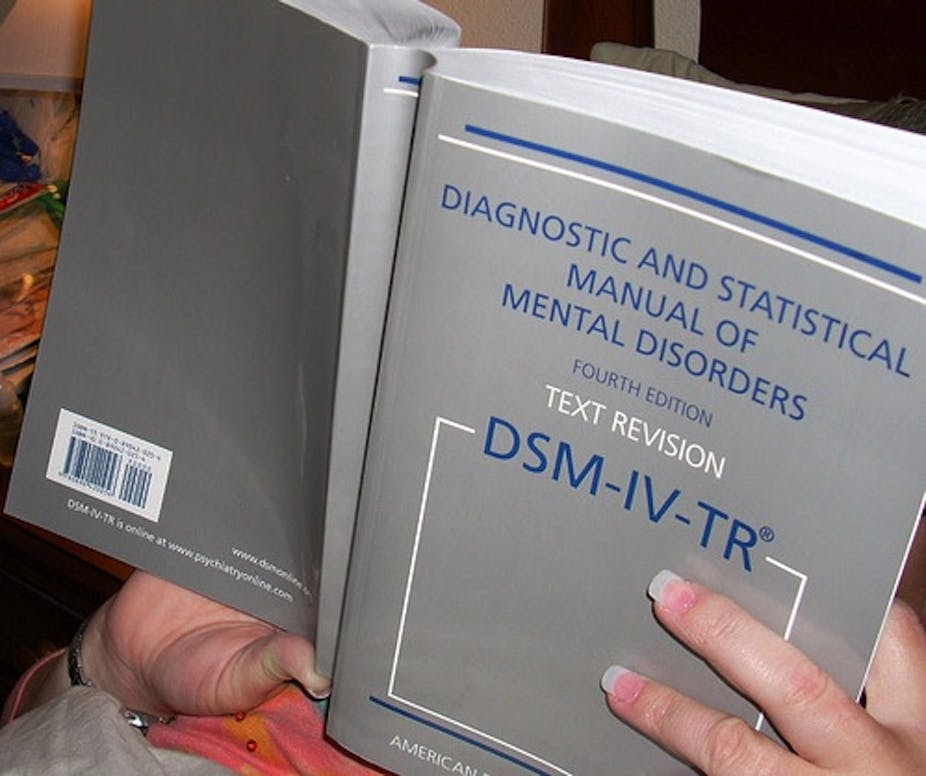The DSM giveth, and the DSM taketh away - this is the less-than-complimentary sentiment of many people within the autism community as the clock ticks down to the publication of the most eagerly-anticipated book of 2013.
DSM, of course, is an abbreviation for the Diagnostic and Statistical Manual of Mental Disorders. Commonly referred to as the bible of psychiatry, perhaps a more fitting analogy of the DSM is that of a dictionary, because it provides the criteria by which clinicians define, and therefore diagnose, various psychiatric and developmental conditions.
But the influence that this (at last count) 886-page book wields over clinical practice, and by extension the entire population, is certainly of biblical proportions.
Which brings us back to the on-again off-again relationship that it has with autism.
Currently, there’s no biological test for autism, and diagnosis is based on the presence or absence of a checklist of behaviours. But there’s much variability between the behaviours of different children with autism (and even in the same child over time), so choosing the behaviours that constitute “autism” has proven to be an extraordinarily difficult task.
The first diagnostic criteria were published in the third edition of the DSM (DSM-III, 1980), which listed Infantile Autism as a severe disorder of social and communication development. The fourth edition of the DSM (DSM-IV, 1994) broadened the diagnostic boundaries, by not only including the more severe form of autism (Autistic Disorder), but by also recognising milder subtypes, such as Asperger’s Disorder and Pervasive Developmental Disorder – Not Otherwise Specified (PDD-NOS).
The fifth edition of the DSM (or DSM-V), which is due for publication in 2013, is set to shake things up again. By far the most controversial proposal for DSM-V is to amalgamate the various subtypes of autism into the omnibus diagnostic category of Autism Spectrum Disorder.
The changes to diagnostic criteria between the DSM editions have reflected key research advances in the understanding of autism. The main reasoning behind this latest move according to Professor Francesca Happé, a member of the DSM-V Neurodevelopmental Disorders Workgroup, is that “to date there is not a robust, replicated body of evidence to support the diagnostic distinction” between the various diagnostic categories.
Prof Happé points to the large body of research comparing children diagnosed with Asperger’s Disorder and children diagnosed with high-functioning Autistic Disorder, which has failed to find any consistent differences between the two autism “subtypes” in terms of potential (neurobiological and genetic) causes, responses to intervention, and outcomes in adulthood.
To put the argument more simply: the DSM-IV provided an educated guess at autism subtypes, but research indicates that these aren’t correct. So, why are many in the autism community concerned about DSM-V?
My reading of the situation is that the proposed change for DSM-V is not overly controversial among autism researchers. For many years now, researchers have been using the term Autism Spectrum Disorders, in response to the increasing recognition that autism is not one condition, but a collection of disorders, each of which result in a reasonably similar pattern of behaviours.
The main anxieties relate to how this change will influence clinical practice. One suggestion is that many high-functioning children (that is, children with fewer behavioural difficulties) who would meet criteria for a diagnosis under DSM-IV guidelines, would not qualify for a diagnosis of Autism Spectrum Disorder under the criteria set out by DSM-V.
In Australia, a clinical diagnosis of Autistic Disorder, Asperger’s Disorder or PDD-NOS qualifies a family for governmental assistance packages and certain levels of insurance coverage, which helps with the considerable costs of raising a child with autism. The prevailing fear is that children who don’t (or no longer) qualify for a clinical diagnosis under the new guidelines, but who still face considerable life challenges because of their developmental difficulties, will not be eligible for these benefits. Understandably, this is a frightening prospect for many within the autism community.
There are very few published studies in this area, which makes it difficult to evaluate the validity of these concerns. But several large-scale studies investigating the correspondence of diagnoses made under DSM-IV and (proposed) DSM-V guidelines are currently under way, and results will be published before the finalization of the DSM-V criteria in December 2012.
The proposed abolition of the diagnostic category of Asperger’s Disorder has also inspired considerable debate, particularly within the “Aspie” community, many of whom feel that they are losing their identity.
Many people with Asperger’s Disorder have a large degree of pride about their diagnosis. The term itself has become part of the cultural landscape; one particularly common game is to retrospectively diagnose historical figures with Asperger’s. There now exists a large and hugely supportive international network.
The fear is that the elimination of this diagnostic category will not only undermine the existence of the “Aspie” community, but also deter people in the future from seeking out the tremendous benefits that the community provides. Again, this is a legitimate concern.
In the absence of clear biological markers for autism, the DSM will remain a hugely influential book well into the 21st century. Formulating a single set of diagnostic criteria for conditions as variable as autism is an Herculean task, which is made only more difficult by the high-stakes involved. For this reason, it is critical that the scientific and broader community continue to debate the exact make-up of the new autism diagnosis, and explore potential knock-on effects of any proposed change.

